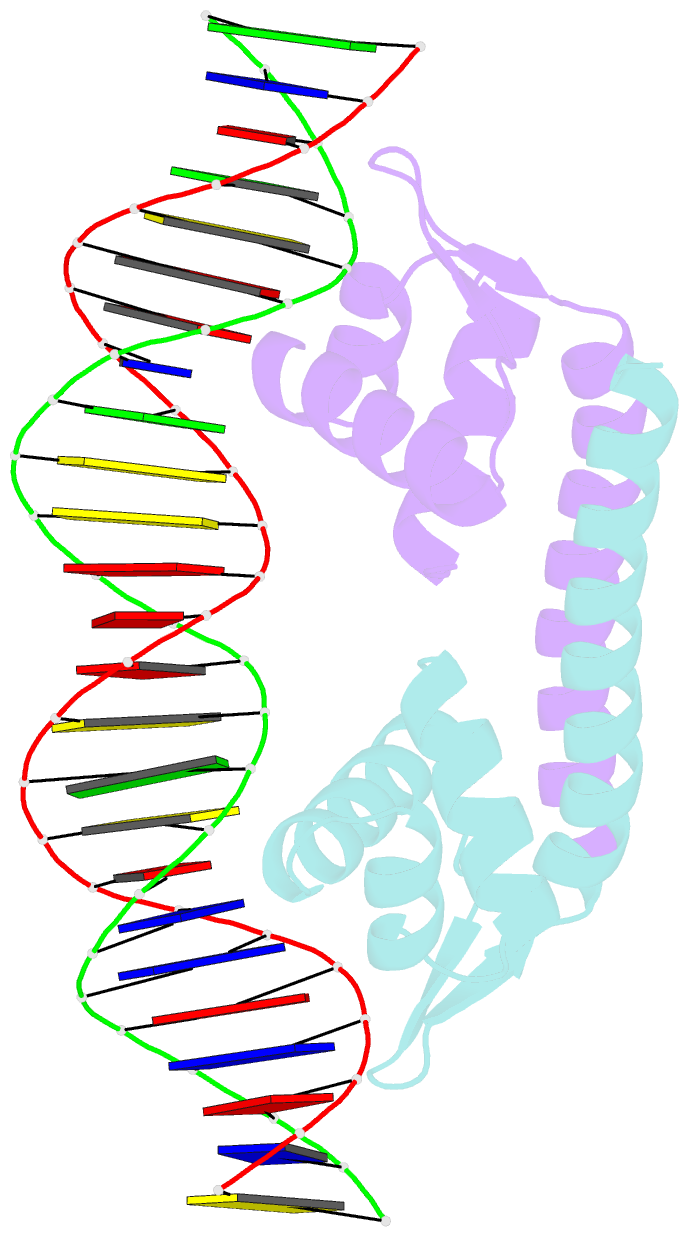SNAP output for PDB entry 5xxp [SNAP web server]
Summary information and primary citation
- PDB-id
- 5xxp; SNAP-derived features in text and JSON formats; DNAproDB
- Class
- DNA binding protein
- Method
- X-ray (2.55 Å)
- Summary
- Crystal structure of cbnr_dbd-DNA complex
- Reference
- Koentjoro MP, Adachi N, Senda M, Ogawa N, Senda T (2018): "Crystal structure of the DNA-binding domain of the LysR-type transcriptional regulator CbnR in complex with a DNA fragment of the recognition-binding site in the promoter region." FEBS J., 285, 977-989. doi: 10.1111/febs.14380.
- Abstract





